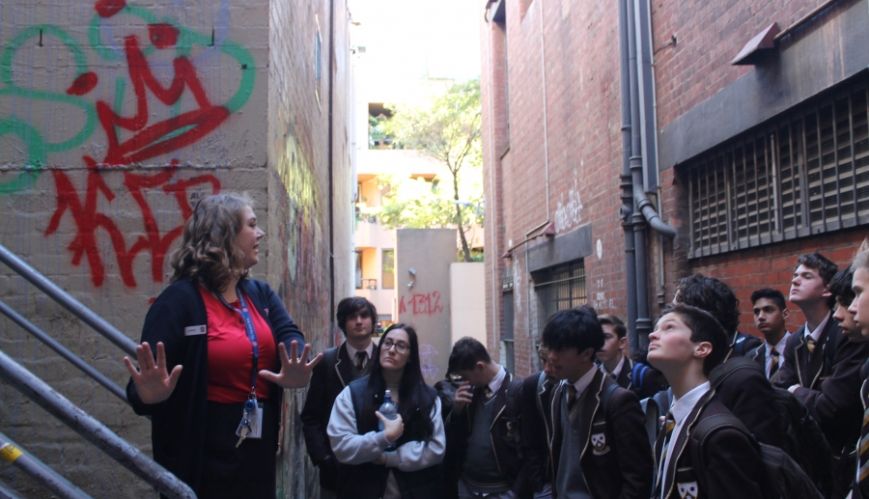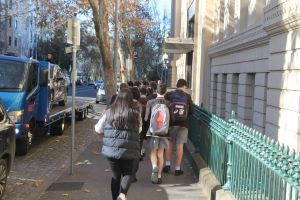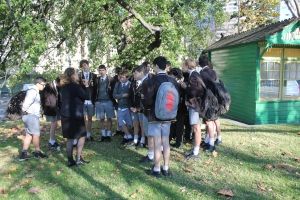Homelessness city tour gives students a reality check

Homelessness city tour gives students a reality check
5 August 2019
The Salvos Schools youth homelessness city tour in Melbourne’s CBD shows secondary school students the reality of homelessness. Grace Davidson, the Salvation Army schools engagement officer (Victoria), explains to Jessica Morris how the program challenges stereotypes and fosters a sense of social justice.
Jessica Morris: Why do you think it’s important for young people to learn about homelessness?
Grace Davidson: Young people are our future. Young people (under 25 years) also make up 40 per cent of Australia’s homeless population (as per research from the Council for Homeless Persons). I view it as vital that young people have an informed understanding of homelessness beyond the current stereotypes that exist. In order to see a change in the culture of homelessness, we need to engage young people in education around homelessness, but also the issues that often accompany it, such as domestic violence and mental illness. By doing so, I believe we will see a more empathetic society in future, but also one where these hardships may be reduced. Speaking openly about these issues discourages isolation and shame, potentially making it easier for people to seek support during hardship.
How does the program work?
We facilitate a number of programs to engage schools and community groups with social justice education and the work of The Salvation Army, but our most popular program is the youth homelessness city tour, which is aligned with secondary school curriculum. 
The two-hour program is situated in the CBD. We invite students to join us in the Salvos Schools classroom where we spend one hour developing the students’ understanding of homelessness and challenge any stereotypes. We use discussion, media clips and a range of activities to allow students to deeply engage with the issue. Our activities encourage students to connect with why someone may experience homelessness and some of the challenges the experience poses, particularly for young people.
In the second hour, we take the class for a walk around the CBD, stopping in locations where people have slept rough in the past and sharing stores, with consent, that encourage empathy and the idea that ‘everybody has a story’. Students learn how to support one another and themselves in the case of social hardship. We provide advice on where to seek support and reinforce the importance of reaching out if you’re struggling.
How do students respond when they are confronted with the reality of homelessness?
I can often feel the ‘shift’ in the room when the reality of homelessness starts to click for students. There is a realisation that homelessness really can happen to anyone. We then see students engage further and ask for other ways they can address the issue beyond the classroom. Our participants often seek opportunities to volunteer, donate and fundraise following the tour.
What is their feedback about the program?
We often are told that the program is ‘eye-opening’ and students will share with us that their idea of homelessness has changed as a result of participating in a city tour.
What have their teachers found most valuable about the program?
Teachers comment on how engaged students become with this topic. Our tour provides ‘experiential learning’ that really captivates the students’ attention and fosters a sense of social justice.
What do you find rewarding about your work?
Every day I get to see young people become inspired to create positive social change. It further inspires me and certainly provides a wonderful sense of hope for the future.
For more information, visit www.salvationarmy.org.au/locations/victoria/salvos-schools
This story first appeared in Warcry.